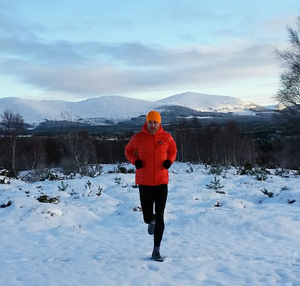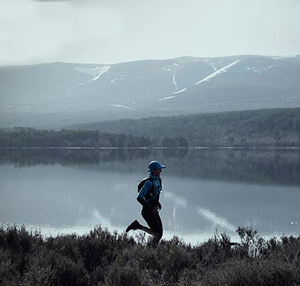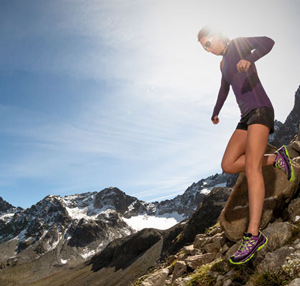How To Run On Snow And Ice
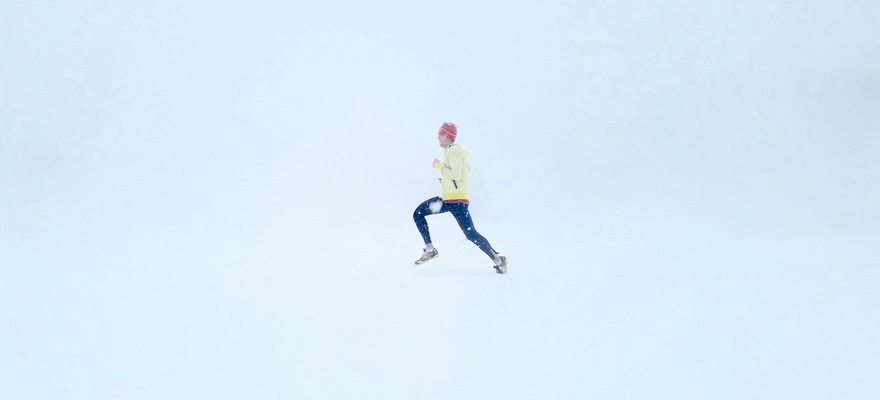
If you’ve never ventured out for a run in the snow, then you are certainly not alone. However, as many smug deep winter runners will tell you, you are missing out.
Whilst heading out in snowy and quite possibly icy conditions can seem like a ludicrous idea and a one-way ticket to slipping over, with the right technique, equipment and some route consideration, you can keep on getting your winter miles in whatever the weather.
Plan A Snow Route
The first step to a successful run in the snow is to think about your route. If possible, this is where trail running really comes into it’s prime. Not only is the scenery and nature spectacular, but the trails offer much better conditions for snow running. Typically you’ll find more grip and less chances of dreaded black ice in comparison to roads and pavements which can quickly turn slushy and icy.
Ideally fresh snow is the best at offering grip, but if you aren’t able to reach the fresh stuff then hardpacked trails are a good second choice. Golf courses are generally a great option if you don’t have any trails nearby.
We also recommend running shorter loops as opposed to a big route, giving you chance to memorise the terrain (slippery sections) and it also means that If you need to cut your run short it’s easier to do so.
Get the Right Equipment
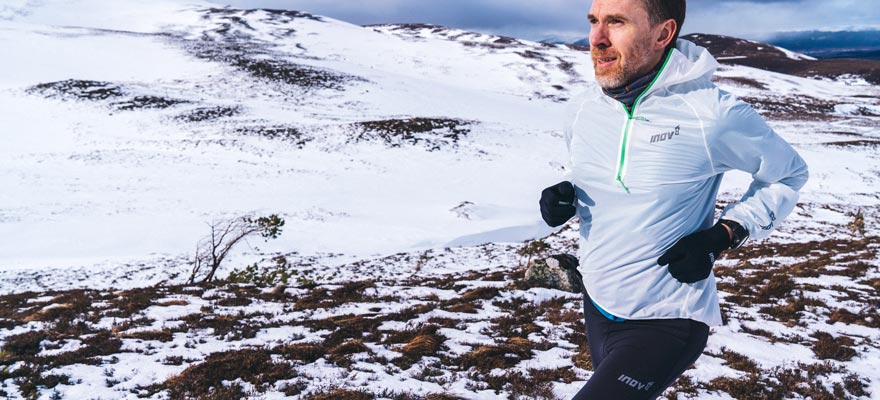
As the saying goes, there’s no such thing as bad weather, just bad clothing choices. Never has this been more true than with winter running where it is key that you choose the right layers and footwear for the conditions.
Shoes
For running in snow conditions, your shoe choice is very important. If you’re running on pavements and road, or very icy conditions, you are going to want to add some grips to your shoes. We have a range available but Kahtoola MICROspikes or Black Diamond Access Spikes are a great starting place.
If you’re running in fresh snow or tackling anything off-road, then you are going to want a pair of trail shoes with aggressive tread. The Inov-8 Mudclaw are a fantastic choice. If you are tackling particularly steep terrain or icy conditions, then you'll still want to consider adding some grips as well.
Clothing
If you’re out in the snow, chances are that the temperature will be around freezing if not potentially below. It’s crucial to make the right clothing choices so that you can stay comfortable and prepared throughout your run.
Layering is your friend here. Start with a base layer, a long sleeve technical top/mid-layer, and a windproof/waterproof jacket if required. Running tights, a warm pair of socks, gloves and a hat are also key.
It is important to remember that you generate quite a lot of heat when running, so if you are a little cold for the first few minutes, don’t worry, once you get into your run you’ll most likely find that you got your clothing choices just right.
With experimentation, you will find out exactly what works for you in different conditions, and you’ll soon have your clothing dialled in.
Adjust Your Technique
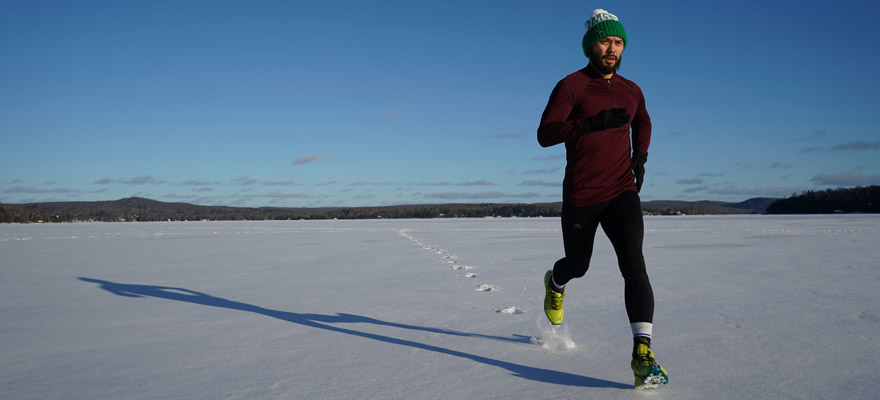
Another trick that seasoned deep winter runs have up there sleeve, is the slight changes to technique that give you better stability and traction.
Keep a short stride and make sure your feet stay low to the ground. This reduces your chances of slipping and should you start to slide, you have a better chance of recovering.
Focus on your foot strike, and aim to hit the ground with a neutral mid-foot position.
Start Out Slowly
When first heading out in snow, make sure that you take your speed back a notch. Take your time and warm yourself into the run and conditions. More often than not it isn’t possible to run as quickly as you would in normal conditions, so enjoy your surroundings and the beauty of being out in such crisp weather.
If you come across any sections that look icy or like they may be coated with black ice, then slow to a walk and cross them carefully.
Adapt Your Training
For a successful winter of running where snow is involved, you need to be adaptable with your training plan. If you have speedwork in your schedule then don’t be afraid to move it back or replace it with a lower tempo running, as flat out running and snow don’t go hand in hand for most people.
Whilst you may not be able to carry out your speedwork, there are plenty of strength and fitness benefits that come with running in the snow. You’ll find that you typically burn more calories thanks in part to the temperature and unstable ground. Running in the snow increases your muscle stability and strength, as muscles across your legs and feet work harder to keep you going.
Running in the snow is a rewarding and unique experience. Take care, and pay attention to the conditions, but otherwise, get out there and get your miles in!
About the Author:Huw Saunders - Outdoor ExpertGrowing up in rural Wales, Huw has been immersed in the outdoors for as long as he can remember. If not surfing the Welsh coast, he can now usually be found either running or hiking in the Peak District and through the winter, tries to get out to Europe to ski as much as possible. |

